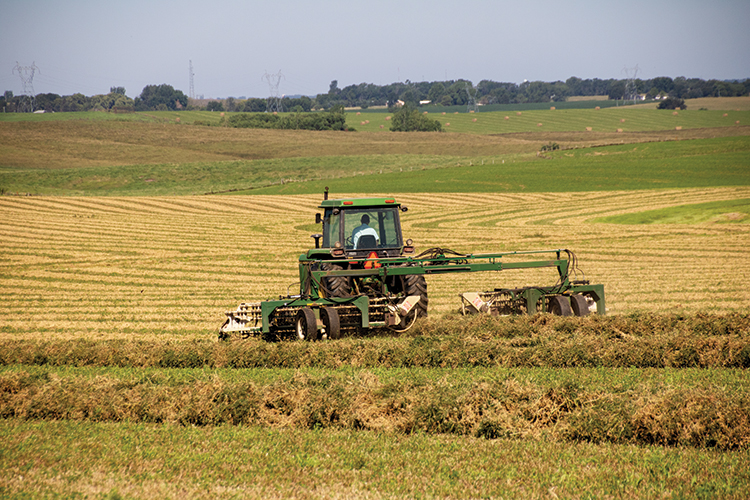Rakes: the bridge from cutting to baling |
| By Adam Verner |
|
|
|
The author is a managing partner in Elite Ag LLC, Leesburg, Ga. He also is active in the family farm in Rutledge.  A good job of raking can save time and money. Haying season is all wrapped up for 2020, and judging by the comments I’ve seen on social media, it has still been either feast or famine for most of the country. Some areas got too much rain; others received nothing for weeks on end. Here in the Southeast, our rainfall was near average and reasonably spread out. It was a good year to put up hay. Regardless of whether you received too much, not enough, or just the right amount of rain, anyone that has sat in a baler knows the rake can make or break your day and the harvested hay crop. There are three main types of rakes that we see on today’s haying operations: the rotary rake, the wheel rake, and the roller-bar rake. Fast and cost effective By far the most popular rake is the wheel rake, and there are several different styles of wheel rakes out there to choose from. The most popular in the East and South is the carted wheel rake with eight, 10, or 12 wheels. These rakes are the most cost-effective way to get your hay into a windrow. They work great in small fields and are the lowest maintenance of any rake on the market. Wheel rakes can be operated at relatively fast speeds, making efficient use of your time. The disadvantage to these models is the lack of adjustability; most only have a few adjustments, and the raking width can only be changed by a foot or two at the most. This doesn’t offer you many choices when Mother Nature gives you a double crop one month and half a crop the next. In the West and Midwest, the high capacity and hydraulic wheel rakes are more common. These larger units start out at 12 and go up to 18 wheels. These models offer many adjustment options, and the raking width adjustment is separate from the windrow width adjustments. These adjustments can be made “on the fly” going through the field to make a nicely shaped windrow. Still, a big downside to these and all wheel rakes is the amount of dirt or ash content that gets picked up with the crop from the ground. Also, wheel rakes do not perform well in high-moisture crops. They simply do not have enough force to pick up a heavy, wet crop. An old standby The tried and true roller-bar rake has been in hayfields longer than the other two types of rakes. Anyone who has been in the business for an extended period of time has probably hooked up to a New Holland “Rolabar” rake at some point. I can remember in the mid-1980s when we got our first V-rake caddie and right-hand delivery rake. We were big time, and I could make one pass and the windrow was done. The downside was that it was not very adjustable, which led to lopsided windrows, and it only took an hour (sarcasm intended) to get it unhooked and ready for transport. These days, there are a few completely hydraulic roller-bar rakes on the market, which can be independently adjusted for the windrow width and raking width. Another great feature is that each rake is driven by a hydraulic motor, keeping the rake tines out of the dirt. These rakes are gaining popularity in alfalfa operations, but a lot of people complain that they roll or rope the hay in the windrow, making for inconsistent feeding into the baler. They are also higher maintenance machines than their wheel rake counterparts. Gaining market share The rake gaining the most in popularity in the past decade is the rotary rake. Numerous manufacturers have now entered this market as more farmers are making baleage and silage. No other rake on the market makes as consistent and fluffy of a windrow as a rotary rake; it can handle any moisture or amount of crop. The tines on the rotary rake can be set where they do not touch the ground and with the number of tines passing over each square foot, no blade or leaf is left behind. The sizes range from 10 feet to 60 feet and in multiple configurations. The biggest downside to a rotary rake is the expense of purchasing a new unit. The cost scares away most small-acreage farmers. In my opinion, however, the next time your rake needs upgrading, you need to take a hard look at the new rotary rakes on the market. They are sure to impress! This article appeared in the November 2020 issue of Hay & Forage Grower on page 16. Not a subscriber? Click to get the print magazine. |
